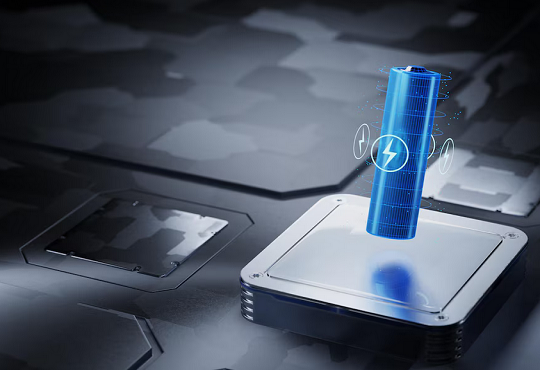KIST develops wireless battery charging tech using ultrasound waves
 Researchers at the Korea Institute of Science and Technology (KIST) have created a biocompatible ultrasonic receiver that preserves its functionality even when it is curved.
Researchers at the Korea Institute of Science and Technology (KIST) have created a biocompatible ultrasonic receiver that preserves its functionality even when it is curved.
The receiver addresses numerous constraints of current wireless power transmission techniques while enhancing biocompatibility and is anticipated to be utilized in future wearable and implantable electronic devices, as stated in a media announcement.
The researchers also showed that batteries can be wirelessly charged by capturing ultrasonic waves, marking a significant advancement in the technology's commercialization.
The research group was directed by Dr. Sunghoon Hur from the Electronic and Hybrid Materials Research Center at the government-supported KIST and Professor Hyun-Cheol Song from Korea University.
As the need for underwater and implantable medical electronics rises, a reliable and continuous power source is crucial. Nevertheless, traditional wireless charging techniques (like electromagnetic induction and radio frequency-based charging) employed in smartphones and wireless earbuds experience limited transmission ranges, reduced energy transfer efficiency in biological tissues, and electromagnetic interference issues.
To address these limitations, researchers are currently exploring ultrasound as a novel technology for wireless power transfer. Ultrasound is advantageous as it is more compatible with humans and less absorbed by tissues, enabling more effective energy transfer in implantable and skin-attached devices. Consequently, wireless charging technology that leverages ultrasonic energy is becoming the next wave of power transfer.
Specifically, the researchers significantly enhanced the power conversion efficiency relative to traditional ultrasonic receivers by employing high-performance piezoelectric materials and an innovative structural design. According to the media release, they successfully developed a flexible and biocompatible ultrasonic receiver that fits the body's contours and maintains stable power conversion, allowing for the transmission of 20 mW of power at a distance of 3 cm underwater and 7 mW at a depth of 3 cm from the skin. This amount of energy is sufficient to consistently operate low-power wearable gadgets or implantable medical devices.

